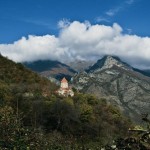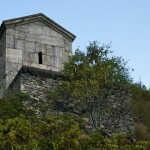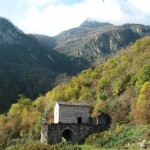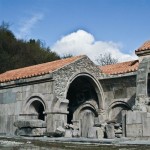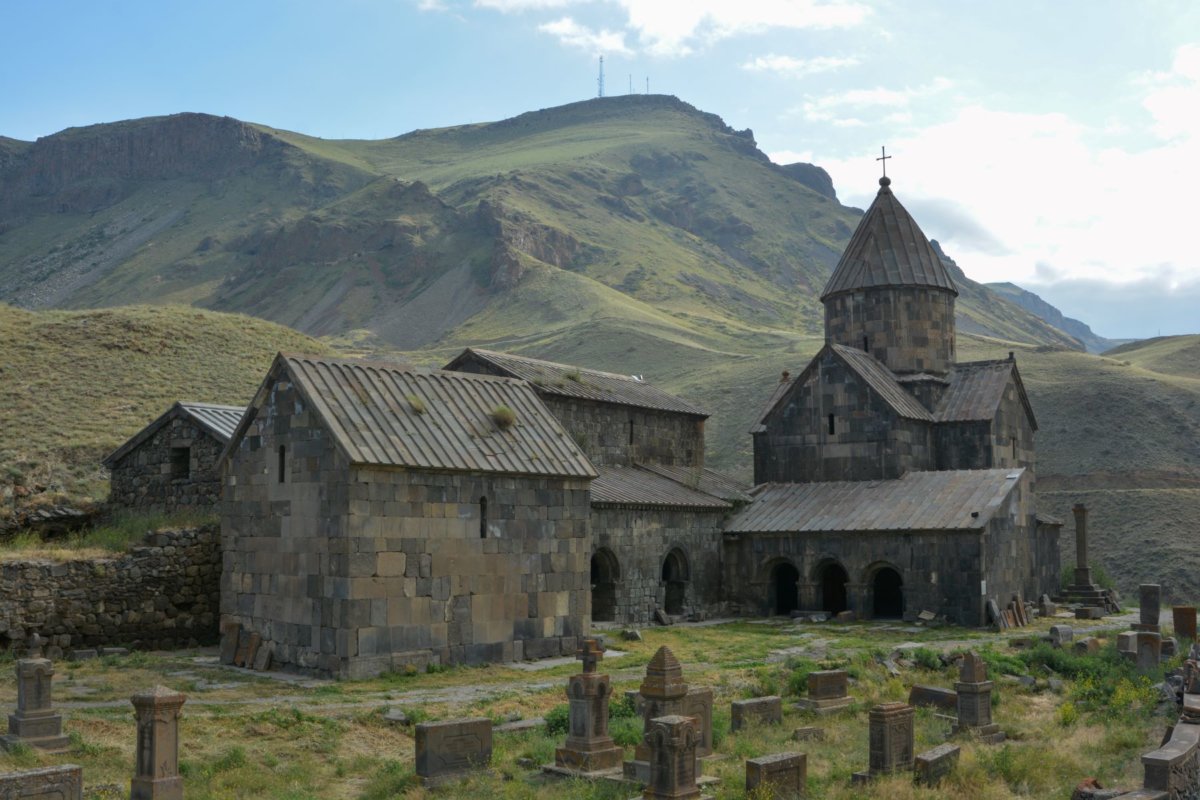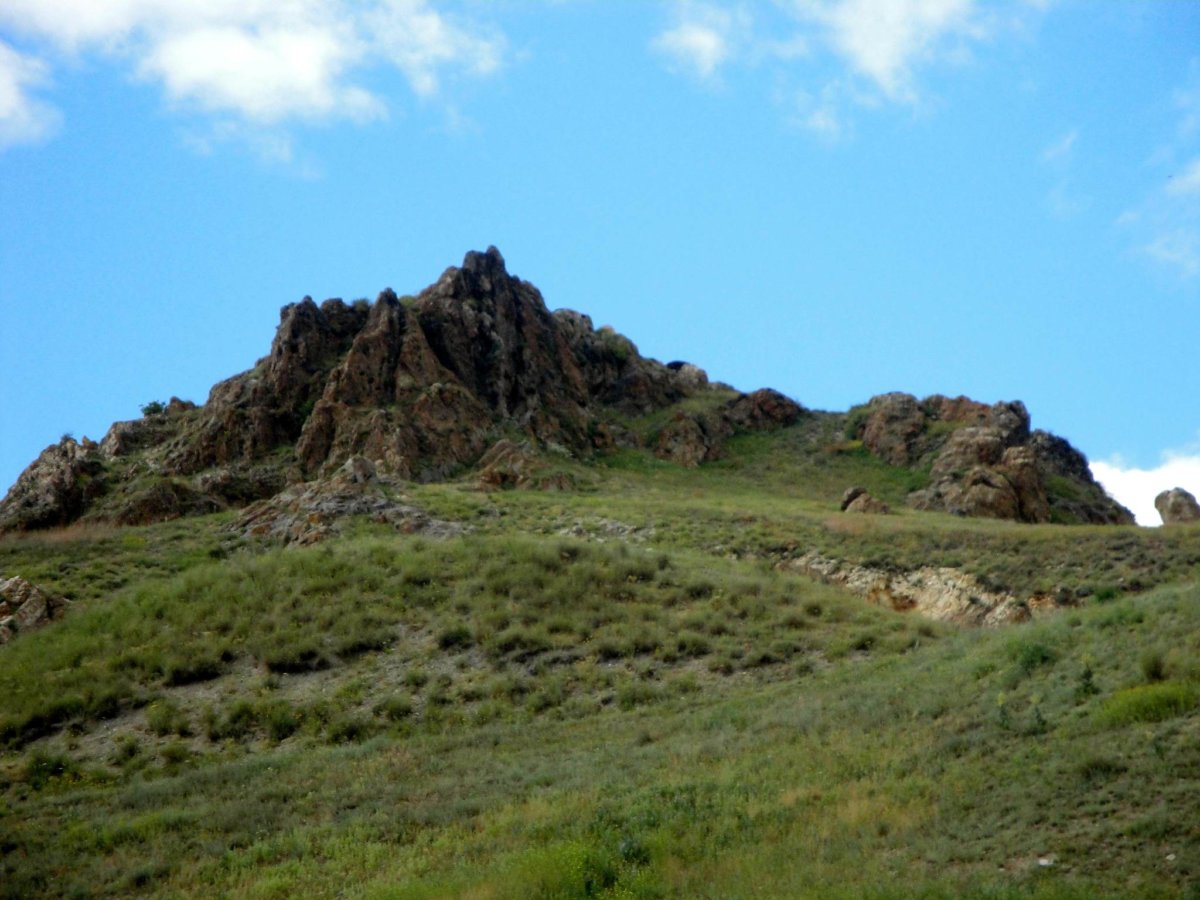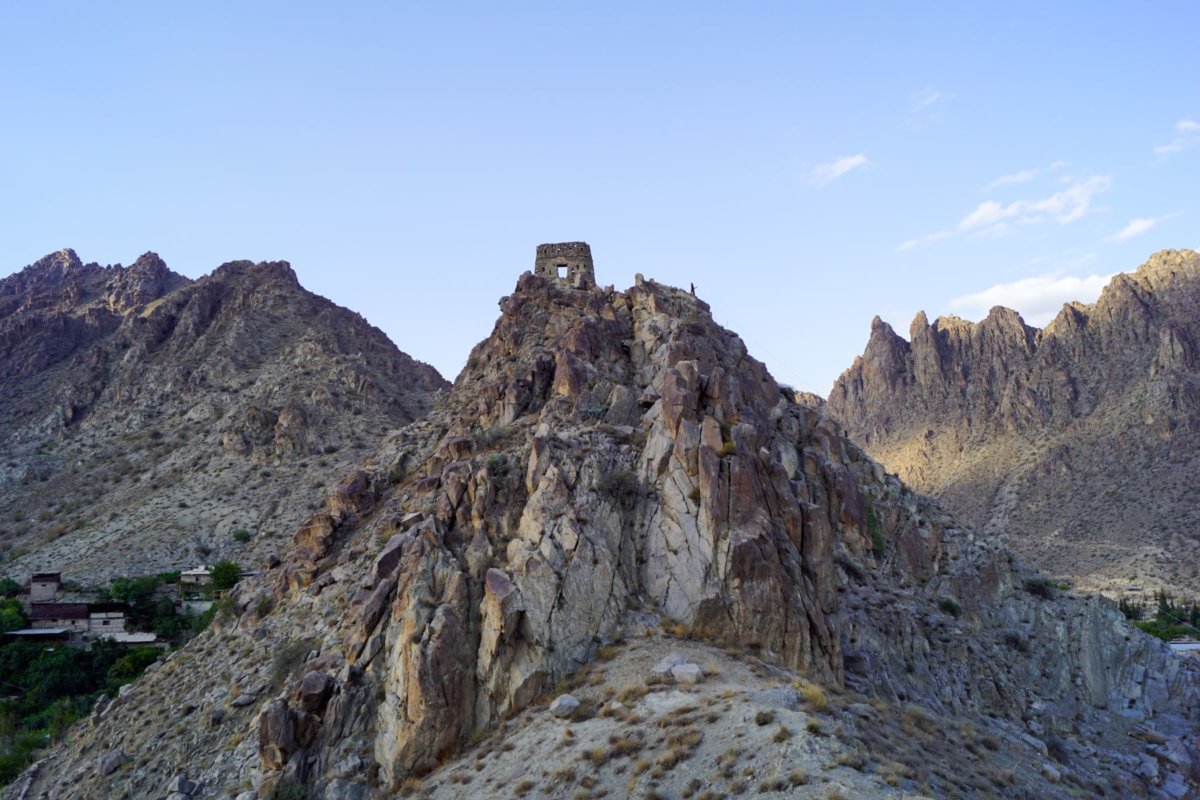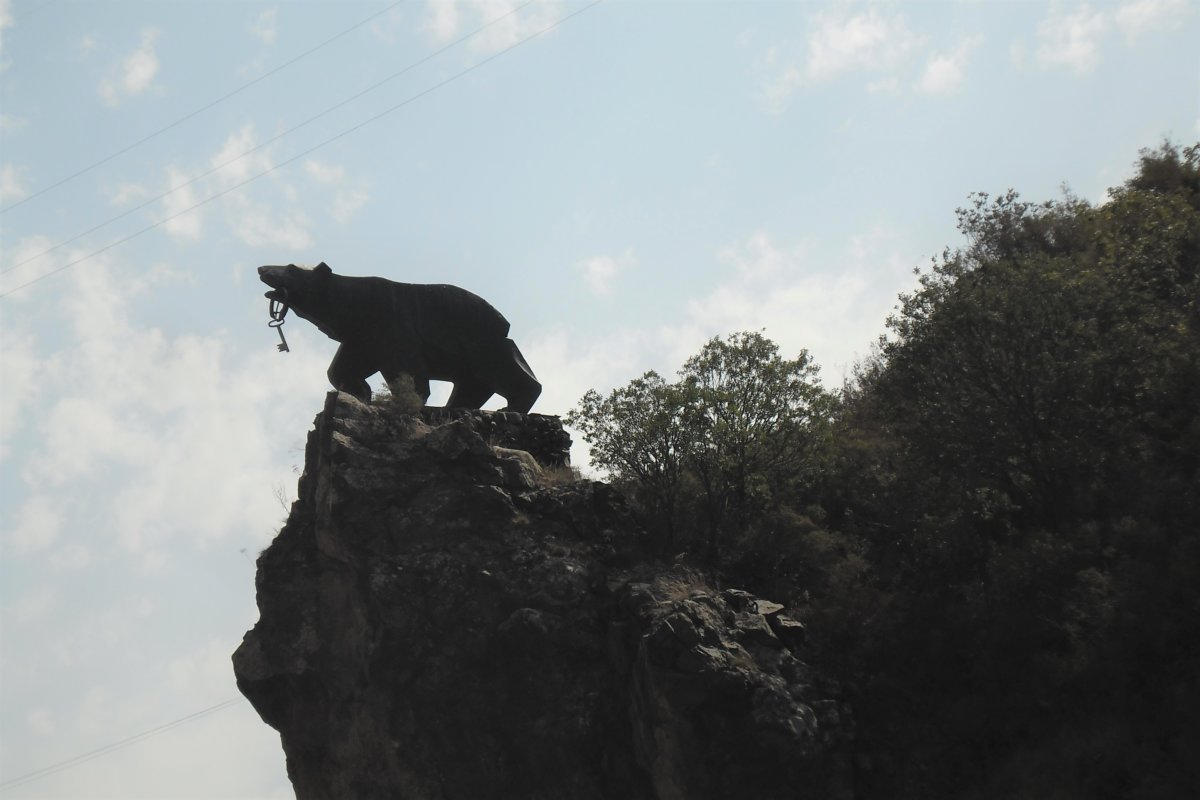VAHANAVANK
t. Kapan,
state index N 8.1.9.7
The monastic complex is situated in Syunik Province of RA, about 5 km south-west from the town of Kapan, on the high-positioned right bank of the Voghji River, on the slope of Mount Tigranasar. It was founded in the X c., by Vahan who was the son of the reigning Prince Dzagik — the ruler of Baghk District of Syunik Province. The monastery was called Vahanavank after Vahan. The monastic complex consists of St. Gregory the Illuminator Church (911), a narthex, a portico (the middle of the XI c.) and the two-storeyed Church of St. Astvatsatsin (1086). In 1046 the church of the complex, the narthex and portico were reconstructed by the Prince of Princes Grigor (later the King of Syunik Grigor I).
St. Gregory the Illuminator Church — is the main church of the complex. The building of the construction was completed in 911. It is a domed hall with a pair of pylons and is built from smoothly hewn basalt.
Narthex — is adjacent to the church from the west. It was constructed in the middle of the XI c., by Vahan Jevanshiryan, who was the abbot of Vahanavank Monastery and the Metropolitan of Syunik. The narthex is a rectangular hall with three vault-bearing arches. The portal is from the south and opens into the adjoining portico.
Portico — is adjacent to the narthex from the south. It’s a vaulted hall. It stretches along the whole length of the church and narthex. All these structures are covered with tile.
Two-storeyed Church of St. Astvatsatsin — is located to the south of the monastic complex, on a height. According to the preserved inscription, the church was erected by the Queen of Syunik Shahandukht, together with her sister Kota, in 1086. It is ranked among the number of two-storeyed crypt-churches. Its first storey is constructed as a crypt, on which rises the structure of the church. It is a vaulted, small, one-nave church which has a pillared balcony from the north and east. The dimensions of the church are smaller than those of the first storey crypt, as a result of which a rounding platform has appeared in the northern and eastern part. It is built from smoothly hewn basalt. The narthex, constructed from unpolished stones, is in the western part.
Vahanavank is rich in epigraphic inscriptions. The epigraphs preserved on numerous cross-stones and tomb-stones confirm that Vahanavank was the pantheon of the royal and princely families of Syunik and Aghvank Regions.
There was a monastic school attached to Vahanavank where Catholicos Vahan I Syunetsi once studied. Judging by epigraphic inscriptions there were two more churches in the territory of the monastery — St. Resurrection and St. Sion, the places of which are still unknown.
Remnants of a large graveyard, a fountain and dwelling buildings have been preserved in the territory of the monuments group. They confirm that once there was a large monastic complex here. Since 1966 excavations have been fulfilled periodically in the territory of the monastery, under G. Grigoryan’s supervision.
St. Gregory the Illuminator Church and the narthex adjacent to it were completely restored in the Soviet period and afterwards in 2006-2009. The portico has been restored partially. St. Astvatsatsin Church was restored still in the Soviet period.
The main literature on the monument:
Obelyan S., History of Syunik, Yerevan, 1986.
Grigoryan Gr., Vahanavank, Yerevan, 2007.
Tamanyan Yu., Restoration of the Stone Age, Yerevan, 1981.
Alishan Gh., Sisakan, Venice, 1893.



